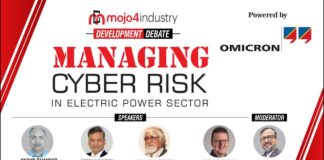Electrical Fire Safety | APAR Industries | Testo | Pankaj Dharkar | BASEC
Electrical fires are frequent in India, leading to significant property damage and deaths. According to the National Crime Records Bureau (NCRB) of India, in 2019, there were 3,454 fire incidents caused by electrical issues. These incidents resulted in 1,399 deaths and 2,319 injuries.
To prevent electrical fires, it is crucial to prevent them. This includes following electrical safety guidelines and ensuring high-quality electrical systems installation and maintenance.
In regards to this, mojo4industry recently organized a development debate on “Electrical Fire Safety.” Watch here, industry experts share their insights and opinions on this critical topic.
While sharing his views on two best practices for making a building fire-safe from the perspective of a T&M equipment manufacturer, Vimal Chavda, Vice President – Instrumentation, Testo India, said, “The first practice is to prioritize regular audits, especially for older buildings. Tools like thermography can help identify potential problems. The second practice is to ensure the use of appropriate cables and insulation, rather than relying solely on design specifications for load calculations.”
Talking about the FSCI Suraksha Index, Pankaj Dharkar, Founder & President, Pankaj Dharkar & Associates (PDA), said, “It is an organization that operates voluntarily and as a non-profit entity. While we cannot impose obligations, there is a growing trend towards mandatory fire audits, particularly evident in NBC. Prime Minister Modi himself has acknowledged and recognized this issue. I have recently corresponded with him, expressing our preparedness with an index that aligns with his vision.”
Dharkar further added, “Previously, our focus was on constructing buildings with 20-30 floors. However, today we witness a shift towards taller structures, reaching 60 to 70 floors. Consequently, these larger and taller buildings present distinct challenges, particularly in terms of electrical distribution and wiring. These challenges can only be effectively addressed through independent and comprehensive audit processes. Furthermore, these audits need to be conducted regularly, as a one-time evaluation would be insufficient due to potential changes over time. Therefore, this auditing process must be consistently maintained for many years to come, irrespective of the building in question.”
Speaking about the importance of standardization in cables and wire quality, Harold D’Souza, Regional Commercial Manager, BASEC, said, “A cable is entrusted with numerous critical responsibilities, including integrity, safety, efficiency, and addressing electromagnetic compatibility (EMC) and electromagnetic interference (EMI) concerns. Data communication cables are expected to last 20 years. Presently, the pressing issue is fire hazards and short circuits.”
He further adds, “In the current competitive landscape, cable manufacturers often prioritize cost reduction, resulting in cables that initially meet standards but fail to deliver sustained performance. This concern extends not only to urban areas but also universally. Consequently, the prevailing practice is to select the cheapest cable that meets compliance requirements, without considering the long-term implications.”
While providing examples D’Souza further said, “To illustrate the significance of product certification, consider a case study from Australia. Approximately 3.9 million meters of non-compliant cable were imported, leading to an estimated cost of 35 million Australian dollars for cable removal due to failures. Ultimately, the total cost reached 160 million Australian dollars. Therefore, opting for certified cables entails minimal financial impact, as certification expenses typically amount to around one percent of the total contract. Conversely, non-compliant cables, as previously explained, pose significant problems and potential losses. Hence, prioritizing certified cables ensures that all critical aspects are addressed without compromising safety, performance, or longevity.”
Speaking about the best practices for fire safety in buildings, Ashish Goel, Sr. G.M. – Sales & Marketing (Cable Solutions), APAR Industries Limited, said, “I recommend consumers opt for wires with e-beam technology, which can resist high temperatures and carry more than 50 percent of the current. These wires provide enhanced safety against electrical short circuits.”
Shakti Shukla, Manager – R&D, Technical and Quality Assurance, APAR Industries Limited, said, “There are insulation options available, such as thermostat insulation, which can withstand high temperatures but do not utilize electron beam technology. Based on projections, it is expected that the aforementioned technology will serve as a significant breakthrough for a long time. This is ranging from a minimum of 10 to 12 years and potentially extends up to 15 years. This breakthrough is anticipated to be widely embraced by manufacturers. We have submitted a technical paper to the Bureau of Indian Standards (BIS), advocating for the mandatory adoption of Electron Beam technology specifically in the context of house wiring.”






